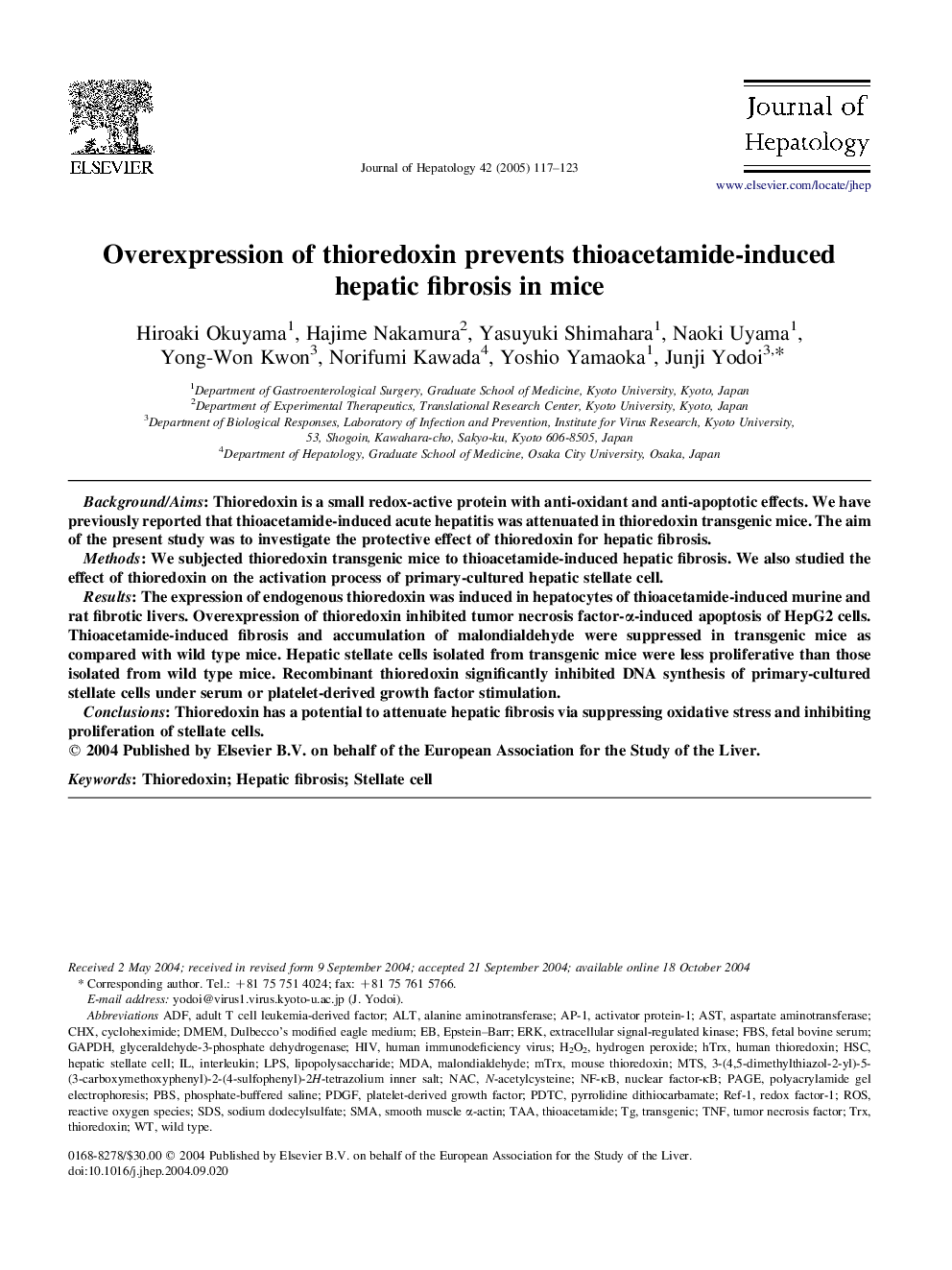| Article ID | Journal | Published Year | Pages | File Type |
|---|---|---|---|---|
| 9254855 | Journal of Hepatology | 2005 | 7 Pages |
Abstract
Thioredoxin has a potential to attenuate hepatic fibrosis via suppressing oxidative stress and inhibiting proliferation of stellate cells.
Keywords
PDTCALTPAGEERKGAPDHNACMTSAP-1CHXPDGFTrxFBSRef-1SDSRedox factor-1MDADMEMTAALPSTNFPBSadult T cell leukemia-derived factorHSCNF-κBADFDulbecco's modified Eagle MediumN-acetylcysteineROSHydrogen peroxideASTAspartate aminotransferaseAlanine aminotransferasepolyacrylamide gel electrophoresisEpstein–BarrinterleukinTransgenicthioredoxinHuman thioredoxinThioacetamideSMApyrrolidine dithiocarbamatesodium dodecylsulfatefetal bovine serumStellate cellHepatic stellate cellcycloheximideSmooth muscle α-actinplatelet-derived growth factortumor necrosis factornuclear factor-κBHepatic fibrosislipopolysaccharidemalondialdehydePhosphate-buffered salinewild typeH2O2human immunodeficiency virusHIVactivator protein-1extracellular signal-regulated kinaseglyceraldehyde-3-phosphate dehydrogenaseReactive oxygen species
Related Topics
Health Sciences
Medicine and Dentistry
Gastroenterology
Authors
Hiroaki Okuyama, Hajime Nakamura, Yasuyuki Shimahara, Naoki Uyama, Yong-Won Kwon, Norifumi Kawada, Yoshio Yamaoka, Junji Yodoi,
